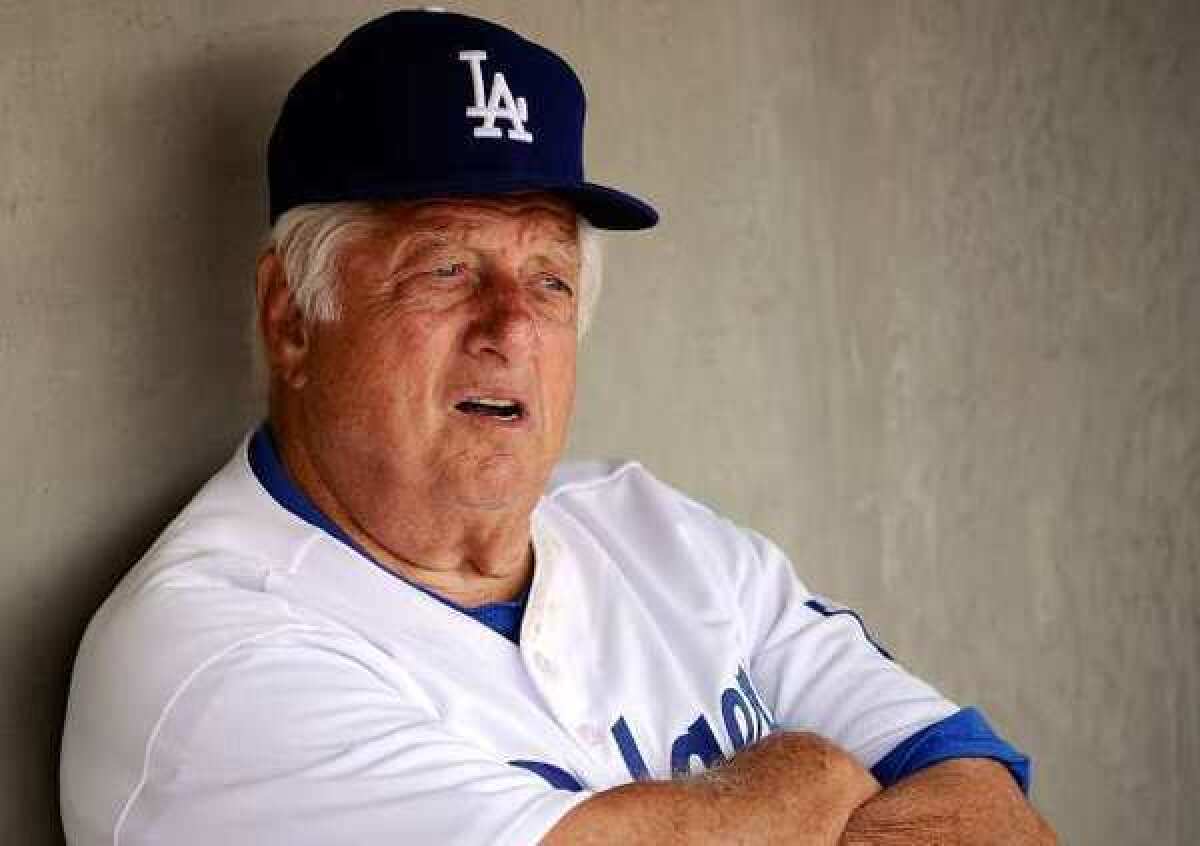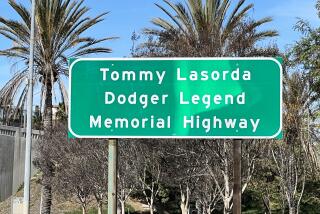Tommy Lasorda: What is a ‘mild heart attack’?

- Share via
Hall of Fame manager Tommy Lasorda, who retired as Dodgers manager after a heart attack in 1996, had a “mild heart attack” Monday while in New York City. He is 84, and reports say he had a stent inserted to clear a blocked coronary artery and is resting stably and comfortably at a hospital in New York City.
What is a “mild heart attack,” anyway? “A ‘mild heart attack’ is like being a little bit pregnant -- it’s still a heart attack,” said cardiologist Dr. Robert Greenfield, chairman of medicine at Orange Coast Memorial Medical Center in Fountain Valley. (As well as a general cardiologist, Greenfield is a “lipidologist,” an expert in cholesterol management.)
A heart attack is a lay term for acute damage to the heart caused by a sudden blockage somewhere in the left or right branches of the coronary artery tree, Greenfield explained. It generally happens after rupture of cholesterol-rich plaque that has built up in the arteries. That rupture triggers a blood clot, which can block an artery.
If blood can’t get down that branch, the heart muscle is starved of oxygen. “Like any part of the body, it will get injured, and part of the muscle could die -- so it becomes an urgent matter to get that patient into a hospital facility to do an angiogram, identify which artery is blocked and then go after it,” Greenfield said.
Angioplasty and stents: To unblock an artery, angioplasty is performed: A catheter is snaked into a coronary artery, usually from the groin, to the site of the blocked artery. A balloon at the end of the catheter is inflated to expand the artery, and a stent is then usually inserted to keep the artery open and unblocked.
Angioplasty was first done in Switzerland in 1978 “and it became prevalent in all countries soon thereafter,” Greenfield said. Stents were FDA-approved here in the late 1990s. In the past, Greenfield said, “people who had angioplasty only with a balloon would suffer re-narrowing of the artery some time later, three-six months down the road.” Stents offer longer-term success.
Time is of the essence: “The time from a patient opening the door of the ER to the time the artery is opened should be less than 90 minutes -- that’s called the ‘door to balloon time,’” Greenfield said. “That really saves lives. Thirty years ago, when none of this was thought of, patients would lie in hospital one to two weeks and complete their heart attacks and people had more heart damaged and became more disabled.”
A ‘mild’ heart attack? It’s another lay term -- this time for a heart attack where not much damage has been done to the heart muscle, Greenfield explained. It isn’t a term that doctors like to use because it could seriously understate the amount of risk a patient is under, he added.
“We’d rather say, ‘You had a coronary event -- you came to the hospital, one of your artery branches was closed, that’s a very dramatic warning sign,’” Greenfield said. “How do we know there aren’t plaques sitting in other coronary arteries that haven’t ruptured and closed down yet but might?”
Treating the underlying problem well -- via medications and/or lifestyle measures to control blood cholesterol, blood pressure and diabetes, as well as low-dose aspirin to combat clotting, has the bonus that all the blood vessels in the body will be helped. Not just the ones that feed the heart but also the head (to ward off stroke) and the legs (to fight peripheral artery disease).
Prognosis: Greenfield said he can’t know what Lasorda’s prognosis is. Even though Lasorda is 84, he could continue to lead a healthy and productive life, Greenfield said. “If it’s a second event, you would think people would look really closely at what existing factors still exist and what lifestyle changes he might make and how to stabilize his cardiovascular factors to prevent further episodes,” he said.






